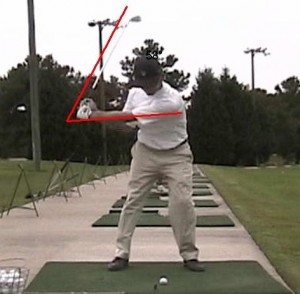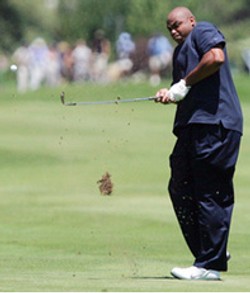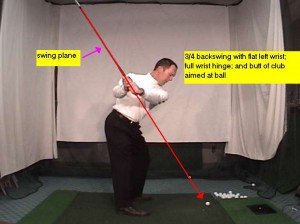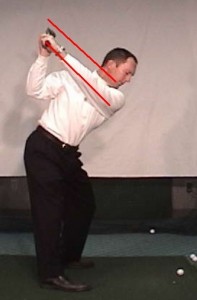The golf setup is the foundation for a golf swing and getting setup to make a golf swing is probably as important as creating the proper foundation on which to build a building. Get it wrong, and it won’t matter how well you build everything else.
Look no further than the “Leaning Tower of Pisa” in Italy for a perfect example. Great architecture, it took over 175 years to build, and it’s now over 800 years old. But because of a bad foundation, it’s just a tourist attraction now. The Tower is tilted 10 degrees (that’s 17 feet off center at the top) and has been essentially unusable for most of its existence. The problem all along has been the foundation.
So how do we setup to make a golf swing and avoid becoming a tourist attraction like the Leaning Tower? First, we need a great grip. But for the purposes of this article, we’re going to gloss over grip, assuming you have the details of hand position already figured out. If not, click Golf Grip – How to Grip a Golf Club.
Once the grip is established, make sure the lead arm (left arm for right-handed golfers) is sitting on top of the chest. Simply picture how the golf ball is in front of your body and the lead arm must also be in front of the body, not on the side. This is no small detail. If the lead arm is sitting on the side of the body, the chest is in the way of starting a proper takeaway and backswing. The golfer is forced to roll the arms around the body which in turn opens the clubface and sends the club off plane. Coming “over the top” on the downswing and pulling or slicing the golf ball is almost guaranteed.
Here’s how to setup correctly for a right-handed golfer. Standing at attention, grasp the club in the left hand while holding the handle beside the left hip, clubhead resting squarely on the ground near left foot. Once you have established the left hand grip, raise the left arm up on top of and across the chest (tricep lays on the pec.) Keep the left arm straight and across the chest as you slowly lower the arm until the butt of the club is straight out from your belt buckle, shaft horizontal to the ground, toe of club pointed straight up. Next, attach the right hand to the club.
You now have both hands on the club, left arm sitting somewhat uncomfortably on top of left chest, left shoulder is higher than the right (which means spine is tilted slightly to the right), right arm is soft at the elbow, right shoulder tucked back and down, club is pointed straight out from belt buckle.
At this stage, we are ready to finish assembling the golf stance. Set the feet just barely wider than the hips, toes turned out about 5 degrees on each foot, and start to bow from the hip sockets as you also let the wrists drop. The clubhead will lower to the ground directly in the center of your stance, butt of club still pointed at belt buckle. Keep your back straight as you stick your tail out and keep your chin up to avoid a “hunch back” appearance. Hands should be about a fist-width to a fist-and-a-half away from legs. Your knees should just crease slightly, no sitting or excessive bending. You are now in the proper golf address position with an athletic posture , basically a “ready” position that would apply to any sport.
If you can’t seem to get the club comfortably down to the ground, have a professional check the length and lie angle of the clubs. A good fit should leave the clubhead resting on the ground with the toe of the club just slightly up in the air. It actually should not be soled completely flat. Do not try to sit down to get low enough if the clubs feel too short. Excess knee flex will ruin your motion. Bow forward more at the hips if necessary. Of course, if the clubs feel too long, you will probably be standing straight up with almost no bend at the hips and the toe of the club way up in the air – the clubs likely should be shortened if that’s the case.
The final step in our setup is to simply march over to the golf ball. From the setup position with the clubhead resting on the ground at the center of the stance, simply shuffle over to the ball while maintaining setup posture. Basically we create the setup while standing a few inches too far away from the ball, then slide the clubhead up behind the ball as the feet take a small step forward. We literally use the club as a yardstick to measure the body distance from the ball.
Think about the similarity to a Space Shuttle launch. NASA spends a tremendous amount of time (months) setting everything up, then they put the shuttle on the “crawler” to slowly (days) march it over to the launching pad, finally they count down (seconds) and press the button (instantaneous) to launch. We’re no different – take all the time necessary to create the setup and aim the shot; slowly, carefully march the setup over to the ball; waggle to count down and relax; then “press the button” triggering the motion – the swing itself is over in less than a second and a half.
Next, we’ll add to the setup by talking about preshot routine. The preshot routine will help consistently apply the setup to shots with both irons and woods while aiming correctly at targets on the range or the golf course.




